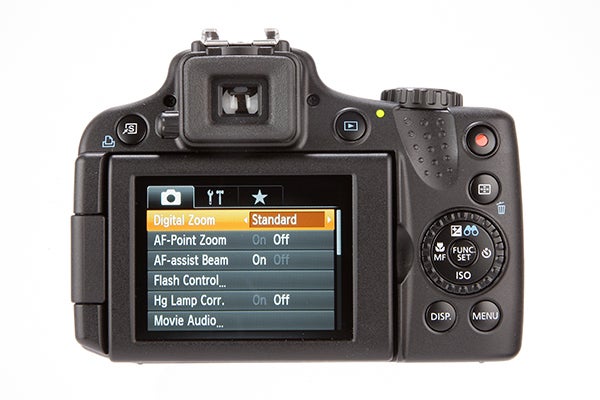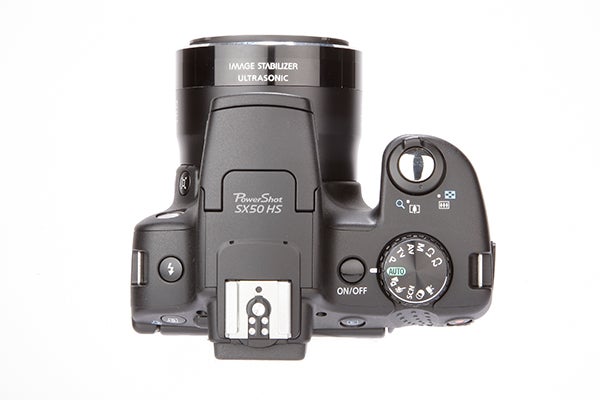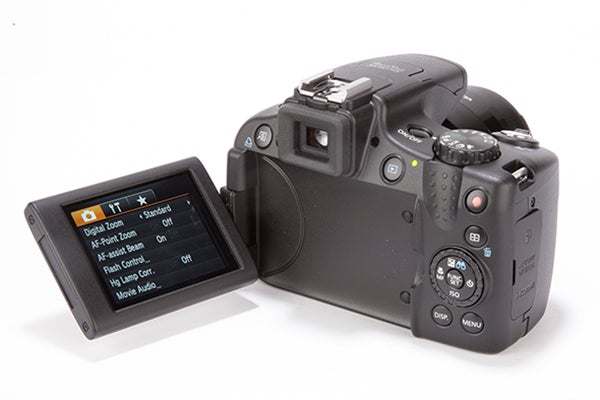Canon PowerShot SX50 HS Review
Canon PowerShot SX50 HS
An affordable bridge camera with a huge 50x optical zoom

Sections
- Page 1 Canon PowerShot SX50 HS Review
- Page 2 Design and Performance Review
- Page 3 Image Quality and Verdict Review
Verdict
Pros
- Huge 50x optical zoom
- Hotshoe for accessories
- Articulated screen
Cons
- Occasional issues with focusing
- Poor quality EVF
- Bulky and unrefined design
Key Specifications
- Review Price: £360.00
- 1/2.3-inch 12.1MP back-illuminated sensor; 50x optical zoom, 24-1200mm; ISO 80 - 6400; 1920 x 1080 HD video capture @ 24; 2.8-inch; 461k-dot vari-angle LCDp
What is the Canon Powershot SX50 HS?
The combination of a large focal range and relatively compact body make bridge cameras increasingly popular for those looking for a more advanced shooting option without the burden of carrying around large lenses and a bulky body. The Canon PowerShot SX50 HS is one such bridge camera, and its huge 50x optical zoom mean that, on paper, it’s the leading candidate in this market. We take a closer look to see how it weighs up

Canon Powershot SX50 HS – Features
At the heart of any bridge camera worth its salt sits a large optical zoom, and this is true of the Canon PowerShot SX50 HS. The model has a huge 50x optical zoom, covering an equivalent focal range of 24 – 1,200mm. It’s supported by Canon’s Intelligent IS stabilisation system that combines lens-shift and digital stabilisation to offer up to 4.5 stops of benefit when it comes to exposure.
It also benefits from Canon’s ‘ZoomPlus’ technology to offer up to a 100x zoom, although this is basically a glorified digital zoom and as such won’t offer the same amount of detail as a traditional optical zoom.
Finally, the lens includes Canon’s Ultra Sonic Motor technology that enables near-silent focusing throughout the extensive focal range – a useful feature as it means you can use the zoom when recording video without fear of annoying noises.
Accompanying the large optical zoom is a 12.1MP CMOS sensor. The sensor – as the camera’s name suggests – features Canon’s ‘HS’ technology that involves the combination of a backlit CMOS sensor and Canon’s DIGIC 5 processor for improved performance in low light conditions.

The rear of the camera sees a 2.8-inch articulated LCD screen that boasts a resolution of 461k-dots, and which can be pulled away from the body and rotated around a horizontal axis for viewing at a range of angles.
The camera also features an electronic viewfinder (EVF) for those that want an alternative way to compose their images. Unfortunately, the EVF measures in at just 0.2-inches and a resolution of just 202k-dots – on paper a potential weakness.
A welcome aspect of the SX50 HS’s specification is the presence of full PASM (Program, Aperture Priority, Shutter priority and Manual) image capture control. Those looking to let the camera so the work can fall back on the model’s Smart Auto shooting mode that chooses from 58 scene modes to get the right one for you.
The SX50 HS also benefits from having the ability to capture Raw files for greater versatility in post production, while the camera also offers Full HD video capture at 1080p resolution and 24fps.
Other standout elements include the presence of a hotshoe on the camera’s top plate that allows for the attachment of Canon Speedlite EX flashguns, while the camera can also features a 67mm filter thread and removable a lens hood.

